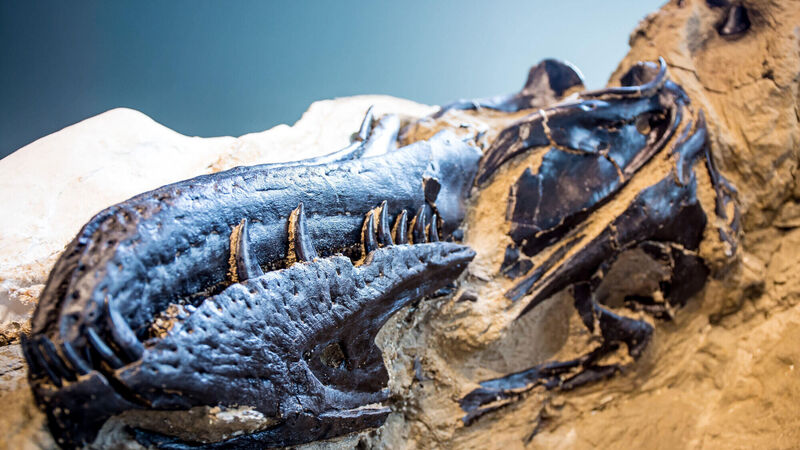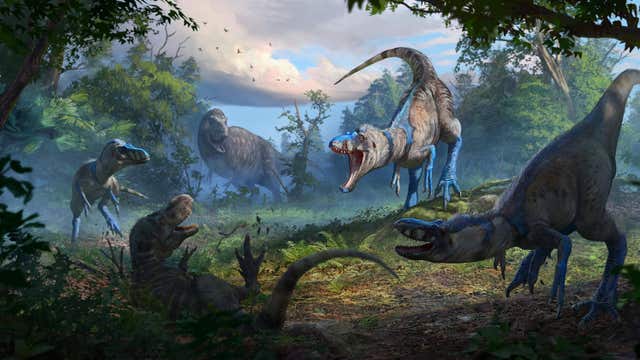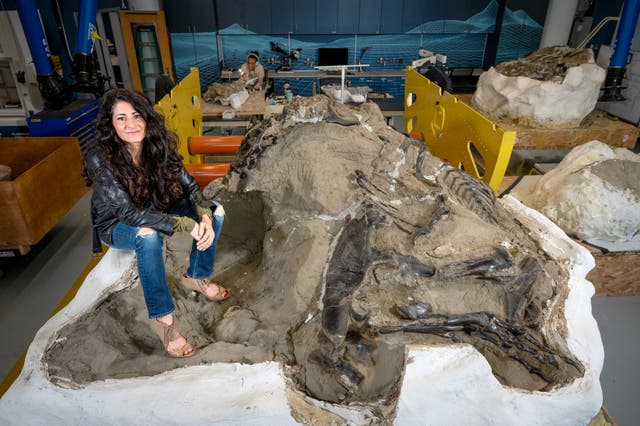Research may solve mystery of whether fossil is young T. rex or new species

Scientists have long puzzled over the origins of a mysterious dinosaur excavated in the 1940s: was it a young Tyrannosaurus rex or another type of dinosaur?
At first, researchers had only a tyrannosaur skull to go by, making it hard to tell if it belonged to a child or adult. Another skull and skeleton nicknamed Jane added to the debate, but did not settle the controversy.
Now a research team said there is new evidence that resolves the case.
The latest clue comes from a complete skeleton – first uncovered in 2006 in Montana – that scientists say identifies the mystery reptile as its own species and not a juvenile T. rex.

The discovery “rewrites decades of research on Earth’s most famous predator”, said study co-author Lindsay Zanno , of the North Carolina Museum of Natural Sciences and North Carolina State University.
Growth rings within the bones found in Montana’s Hell Creek Formation told scientists the new dinosaur was an adult about half the size of a fully-fledged T. rex.
From growth comparisons to other reptiles like crocodiles, they also found that the major differences between the creature’s skull and an adult T. rex’s: changes in bone structure, nerve patterns and sinuses; were unlikely to form from simply going through puberty.
Signs pointed to a dinosaur that was a distant T. rex cousin known as Nanotyrannus lancensis, the researchers reported in a study published on Thursday in the journal Nature.

There is now “more support and evidence than there ever has been” that this T. rex relative could exist, said Holly Woodward, a fossil bone expert from Oklahoma State University who had no role in the new study.
But she is not yet convinced that the other mystery skeletons like Jane are something new.
Other independent scientists also said the debate is not over.
The new skeleton is indeed an adult, but it could be a sister species to T. rex and not a distant relative, said vertebrate palaeontologist Thomas Carr of Carthage College.
There are similarities between the shape of T. rex’s skull and the mystery specimens that keep him from switching camps.
“I don’t think this study settles everything,” he said.
Resolving this case of mistaken identity is important to understanding how T. rex grew up, said study co-author James Napoli of Stony Brook University.
Another big question is whether T. rex was the main predator prowling toward the end of the age of dinosaurs 67 million years ago, or whether a tinier, but still mighty predator also roamed.
The new skeleton is dubbed “Duelling Dinosaurs” because it was found intertwined with the bones of a Triceratops, and is currently on display at the North Carolina Museum of Natural Sciences.










